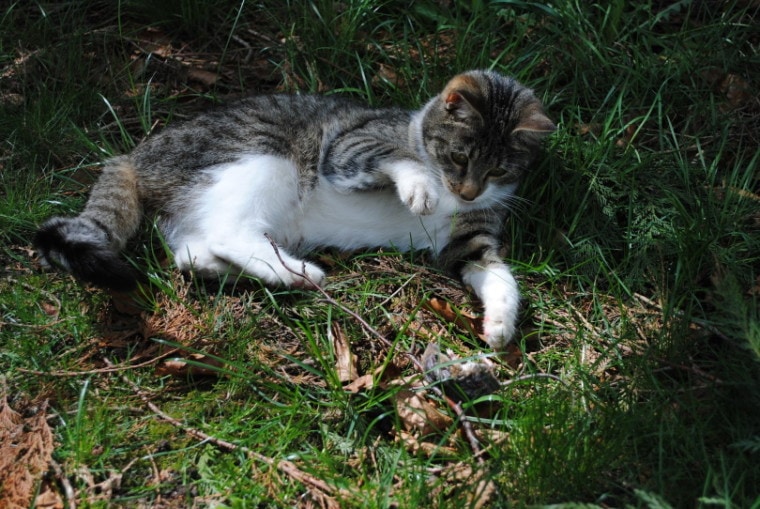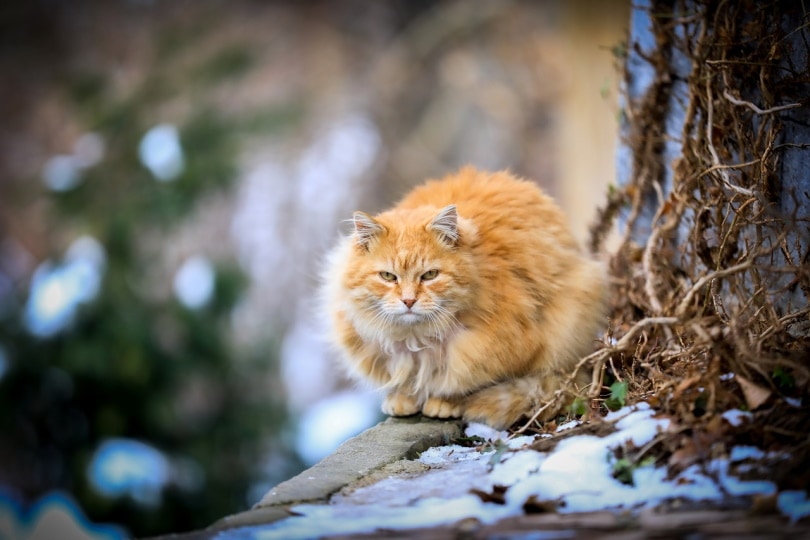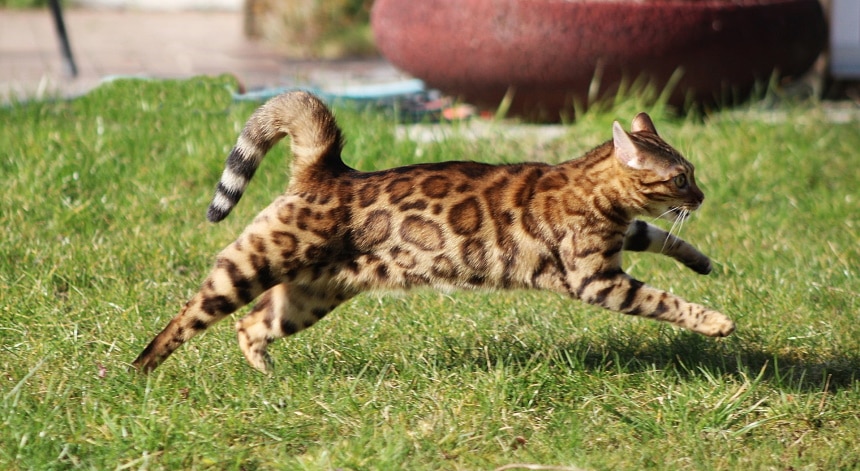
At some point in history, wildcats made their way into our hearts and became the domesticated animals that we know and love. You might have assumed that we were the ones to seek out their companionship, but it turns out that our feline friends may have chosen us instead. This may be surprising, considering their independent temperaments.
Genetic research has found that all domestic cats, called Felis catus, are traced back to a wildcat from the Middle East called Felis sylvestris. These wildcats are still found today in Europe, Africa, and southern parts of Asia. The research also revealed that cats most likely became domesticated around 12,000 years ago. This timeline isn’t that long compared to the age of the Earth. Still, we’re thankful that these wildcats made their way into our homes!
How Were Wildcats Domesticated?
It seems like a pretty big leap from wild animals to the domesticated cats that lounge around the house all day. People usually assume that some kind-hearted human came across a litter of kittens in the forest and took them in. After all, that’s how it happens for many people today. While it’s a lovely thought, that’s not what actually happened.
Cats didn’t have any need for humans for thousands of years, and humans didn’t have much need for them either. Our two species tended to keep their distance and go their separate ways until we started to settle down and form agricultural communities.
In areas stretching from the Nile River to the Tigris and Euphrates Rivers, humans started to store grains that attracted large amounts of mice. These mice then drew in the cats that hunted them. Being around humans provided the wildcats with an easy and abundant food source.
It was at this time that our relationship with cats became mutually beneficial. The cats got easy meals and we got free pest control. Cats then started to spread from this area to almost all corners of the world.

Cat History
As you may already know, ancient Egyptians became fascinated with cats and eventually brought them into their homes and worshipped them. They were amazed at the cat’s ability to keep them safe from dangerous rodents, scorpions, and snakes. They even worshipped feline deities and demons. Their beliefs were so serious that killing a cat could be punishable by death. Egyptians even mummified their cats and put them in tombs with their families. Egyptians aren’t the only ones who worshipped cats. India, China, and the Vikings also had societies with feline goddesses.
There was a short period when some people thought that cats were evil or linked to the devil. This belief was more common with black cats in the 14th century because it was thought that witches could turn into them and sneak into their homes. Thankfully, most of these myths are long gone.
Something interesting about cats is that for the most part, we liked them as they were and didn’t breed them to perform specific tasks, as we did with canines. However, we still did do selective breeding to achieve certain types of looks and temperaments.
The Differences Between Domesticated Cats and Wildcats
While the domestication of cats isn’t that old, quite a few differences have taken place over the past 12,000 years.

1. Physical
Cats still resemble their ancestors in many ways; they just seem to come in smaller packages. Overall, domestic cats are much smaller in size because their diet and activity levels have changed. Their brains are also smaller relative to their body size. Domestic cats have more colorful coats now because they no longer need to blend in with their surroundings. Their pupils also have a different shape to help them gauge distances and pounce on their prey.
2. Temperament
If you pay close attention to your pet cat, you’ll see that they have similar temperaments to wildcats. The most significant difference between the two is their aggression level. Wildcats must be aggressive to capture food, fight, and fend off other animals. Housecats don’t have to constantly be on edge, so they’ve become calmer, gentler, and kinder over the years.
3. Behavior
Cats and wildcats have quite a few similarities when it comes to their behavior. Cats do not roar, but they do communicate by making noises. They both sleep for 12 to 16 hours a day. They even like to hunt and stalk prey. These are only some of the similarities between the two.
Conclusion
Unlike wildcats, our cats today make exceptional housemates. Each cat has their own personality and keeps you on your toes for the day. They have become some of the best companions and ones that we can always rely on to comfort us at the end of a hard day. We’re thankful every day that these cats made their way into the lives of humans, and it’s rewarding to know that they care about us (almost) as much as we care about them.
- You might also be interested in: Were Dogs or Cats Domesticated First? History of Pets
Featured Image Credit: Kathryn19, Pixabay






